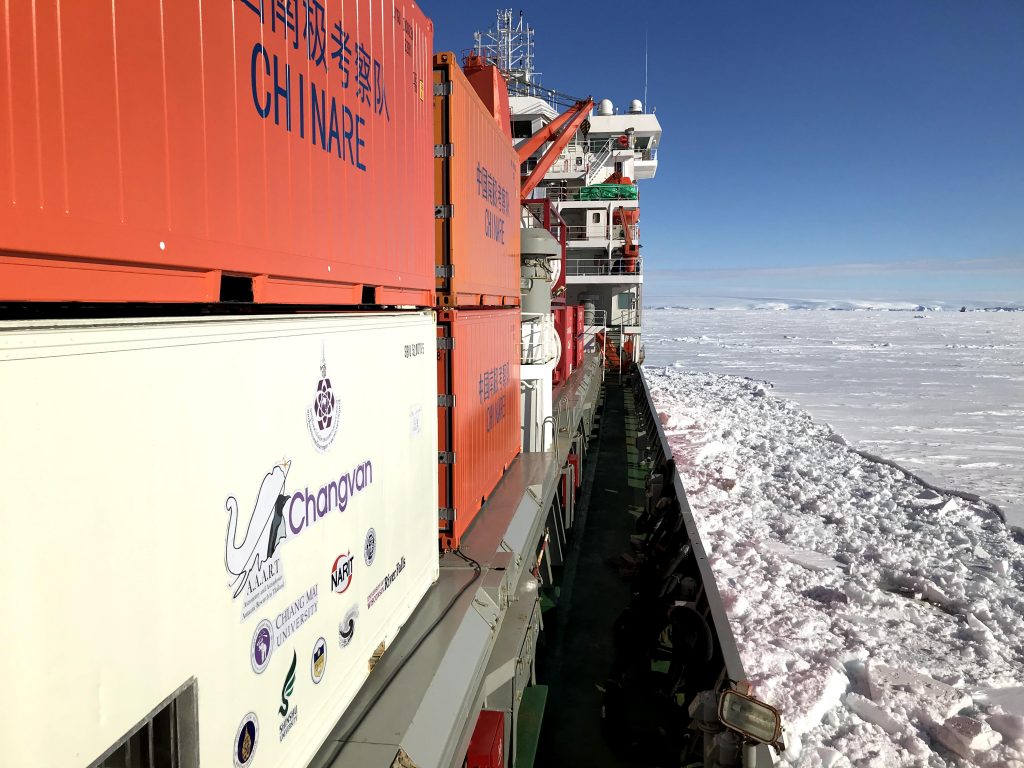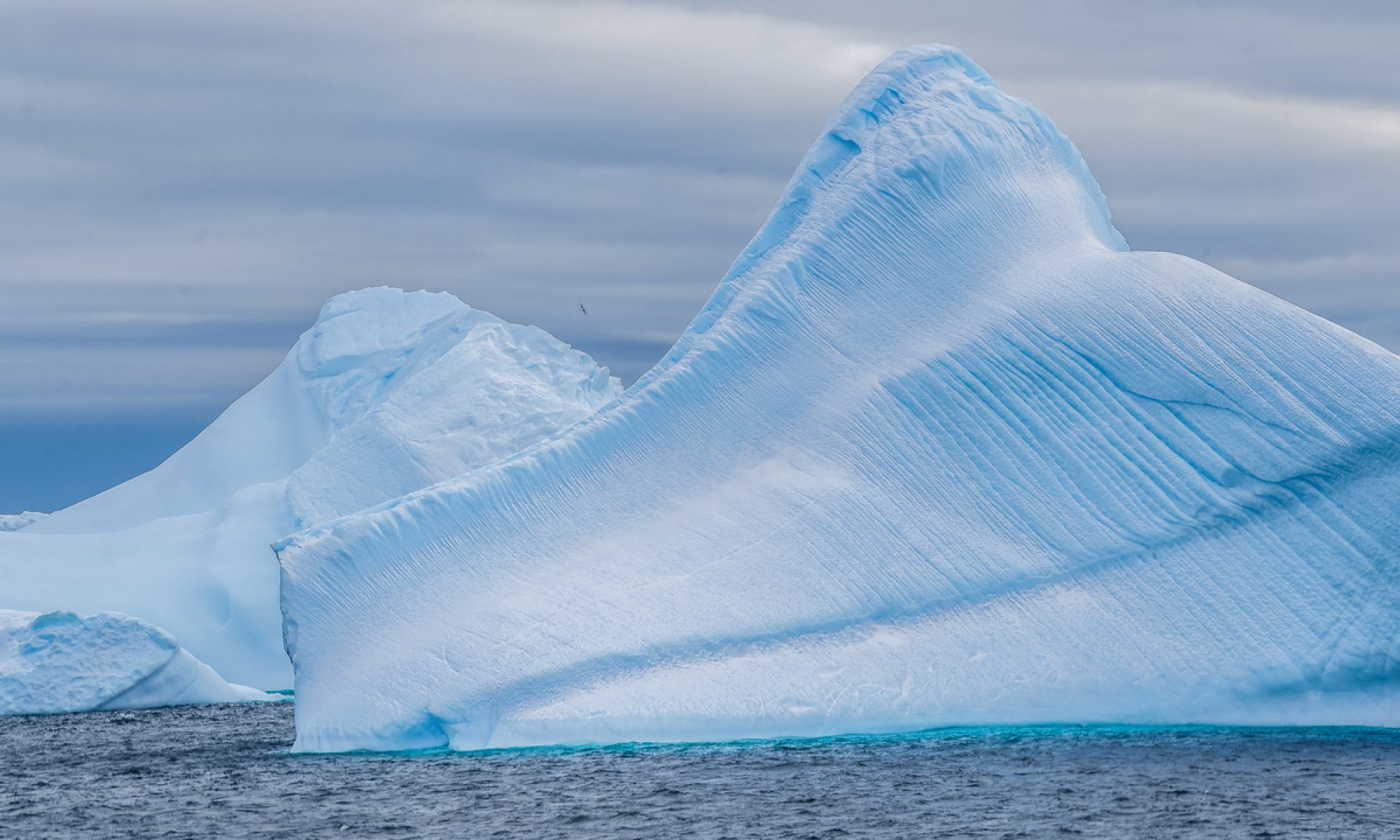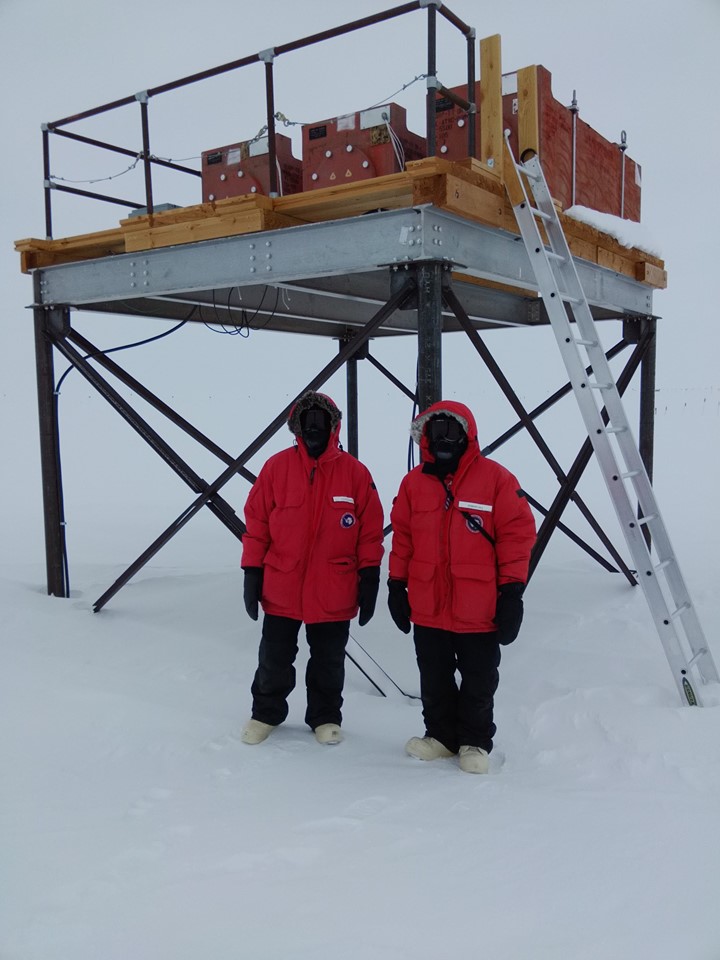Why the Antarctic research in Thailand would be important?
Thailand is not a country with a natural interest in cold climate research, nor is it geographically close to the Antarctic. It, however, has a population of approximately 70 million, with a rapidly growing industrial and technological economy. It is, therefore, essential to maintain Antarctica pristine and exploit only for carefully controlled scientific purposes that Thai people are exposed to the reasons why the Antarctic is so important for scientific research.
What are we doing? Why Antarctica?
We study Cosmic rays from space. There are unique geomagnetic and geographic features about Antarctica that allow cosmic ray studies that simply cannot be done elsewhere.

How does research in Thailand connect to Antarctica?
Our interest is to understand the influences of space weather on the weather and climate on our planet. The space weather could be monitored at ground level by observing changes in the Earth’s magnetic field from the ground-based detectors called a neutron monitor, indirectly monitor cosmic rays from the Sun and galactic sources. The accessibility to the data of extremum energy in given regions would be useful. In Thailand, we have the Princess Sirindhorn Neutron Monitor (PSNM) at Doi Inthanon (high altitude significantly improves the count rate). This has almost 40 tons of lead and 18 10BF3 counter tubes to provide one of the world’s top count rates, as well as the world’s highest energy threshold due to its location near the geomagnetic equator. Neutron monitors typically make use of Earth’s magnetic field as a magnetic spectrometer. Strictly speaking, passage through Earth’s magnetic field depends on the “rigidity” (P) or momentum per charge, in units of GV, which for protons of P >> 1 GV is roughly equivalent to their energy in GeV. Thus we say that the monitor at Doi Inthanon has the highest vertical cutoff rigidity, 16.8 GV, of any fixed monitor in the world that in contrast to the Antarctic region where the vertical cutoff rigidity is almost 0 GV. There are two different neutron detectors at the South Pole station. There is a 3-unit neutron monitor that contains a large amount of lead to convert relatively high energy (100MeV) neutrons to lower energy for detection by 3He proportional counters. This is located on a platform outside the station. There are also twelve 3He counters of identical design mounted in an array on the mezzanine in B2-Science. Ten of these are only 3He counters, and two are contained in paraffin moderators.




